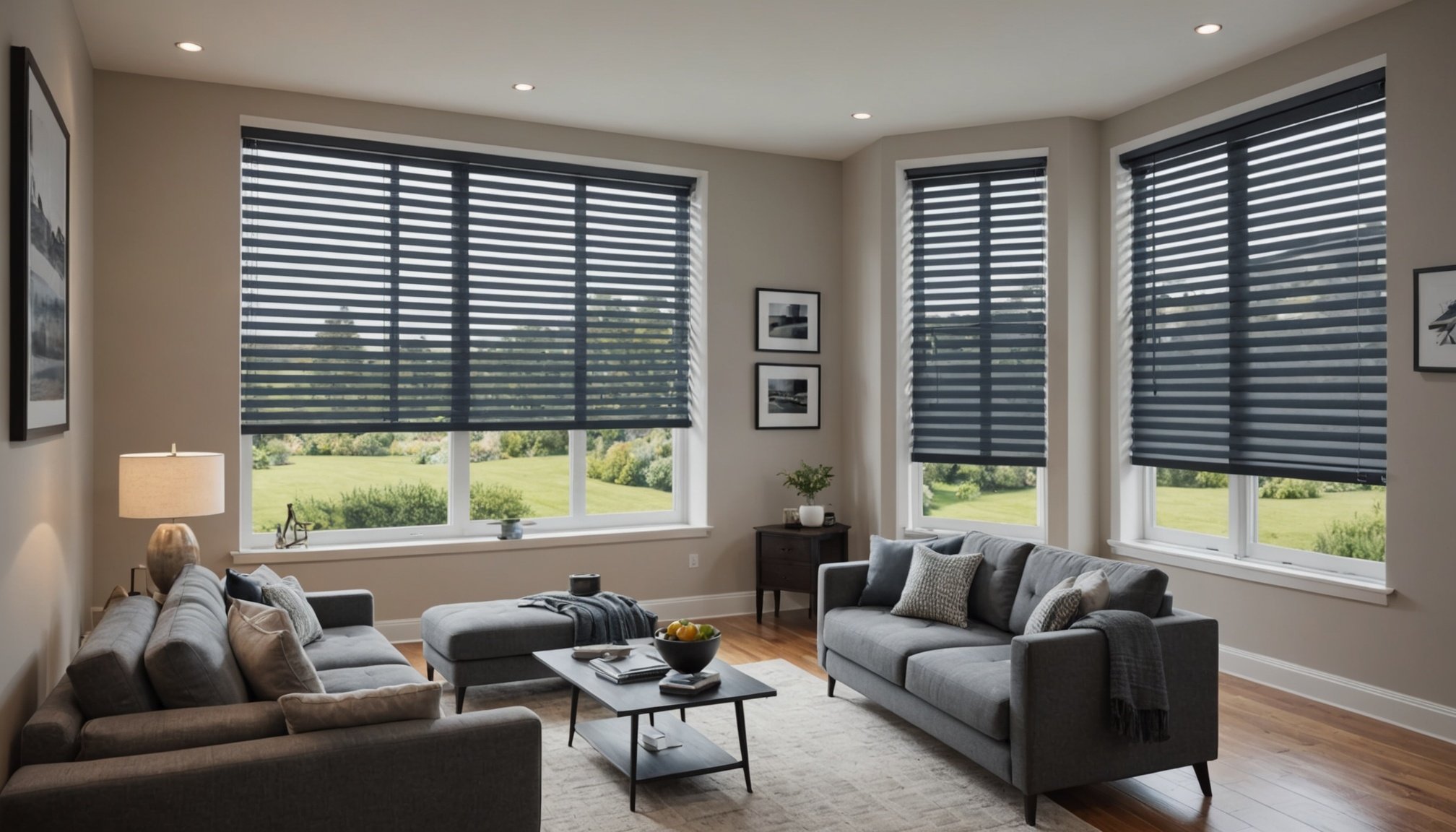Overview of Smart Blinds
Smart blinds are sophisticated window treatments that automate light control in your home. They come in various forms, including motorized roller blinds, cellular shades, and Venetian blinds. Each type offers unique benefits depending on your needs and aesthetic preferences.
One prominent benefit of smart blinds is their seamless integration into a smart home environment. These blinds can be programmed to adjust based on the time of day, weather conditions, or your personal preferences. For example, you can schedule them to open in the morning to let in natural sunlight, which can be both energy-efficient and uplifting.
The user experience is significantly enhanced by the convenience offered by these blinds. Imagine controlling your blinds with a simple app or through voice commands using a smart assistant like Amazon Alexa. Users frequently highlight the increased comfort and ease of managing privacy and lighting in their homes.
Testimonials often stress the reduction in energy bills, as automated adjustments help maintain an ideal indoor temperature. Additionally, smart home enthusiasts appreciate the modern touch and technological sophistication these blinds add to their living spaces.
Have you seen this : Ultimate Guide to Setting Up Your Smartphone-Managed Smart Home Security System: Master the Installation Process!
Smartphone Compatibility with Smart Blinds
Smart blinds offer a seamless fusion with modern smartphone technology, ensuring easy operation and enhanced user experience. To facilitate this, most smart blinds are compatible with major operating systems such as iOS and Android. This compatibility ensures that users can access and control their blinds using their preferred devices, whether they are iPhones or Android smartphones.
To unlock the full potential of smart blinds, a dedicated application is often required. These apps are readily available on the respective app stores — the Apple App Store for iOS users and Google Play Store for Android users. Once downloaded, these applications enable users to adjust their blinds effortlessly, customize settings, and even schedule operations based on personal preferences or environmental conditions.
Connectivity plays a crucial role in the functionality of smart blinds. Two primary options are available: Bluetooth and Wi-Fi. Bluetooth connectivity is ideal for users who prioritize a direct connection without relying on an internet network. On the other hand, Wi-Fi offers broader accessibility and integration with smart home ecosystems, allowing remote operation and interaction with other smart devices, enhancing home automation capabilities.
Step-by-Step Installation Instructions
Installing smart blinds might seem daunting, but it’s a straightforward process when broken into achievable steps. This section offers a clear and concise installation guide to help you get started.
Tools Required for Installation
Before diving into the setup, gather essential tools for an efficient installation process. Typically, you will need:
- A Phillips screwdriver
- Measuring tape
- A level
- Power drill with drill bits
These tools are crucial to ensure precise mounting and alignment of your smart blinds.
Step-by-Step Setup Process
Begin by choosing the right mounting option—inside or outside of the window frame. Measure the window dimensions carefully to ensure the blinds fit perfectly.
- Mark the position of the brackets on the wall or frame.
- Drill pilot holes to prepare for mounting.
- Secure the brackets using screws, ensuring they are level.
- Fit the blinds into the mounted brackets.
- Test the blinds operation by connecting and operating the motorized feature.
Mounting Options and Considerations
Consider the mounting techniques based on your user preferences and room layout. Inside mounts offer a tidy look, fitting snugly within the frame, whereas outside mounts can make windows appear larger. Proper installation enhances functionality and aesthetics, allowing your smart blinds to operate effectively within your smart home.
Customization Options for Smart Blinds
Explore delightful customization options with smart blinds, enabling you to tailor them to your unique preferences. One of the standout features is the ability to set schedules, enhancing both convenience and automation in your home. Imagine having blinds that adjust automatically as the day progresses, letting in morning sunlight and blocking out afternoon glare.
Tailoring smart blinds to sync with other smart devices offers an enriched smart home experience. For instance, coordinate your blinds’ schedule with your lighting systems to create the perfect mood throughout the day. This integration not only optimizes comfort but also synergizes with the entire smart ecosystem for efficient energy management.
User preferences drive these customizable features, leading to smarter living spaces. With the flexibility to adjust settings from a central app, you can personalize how your blinds function in diverse situations. Whether relaxing on a weekend or concentrating on work, customize your blinds to facilitate the right environment.
The transformative potential of smart blinds is vast, enhancing user satisfaction through sophisticated scheduling features and seamless integration with other devices. These features empower users to leverage their smart blinds fully, reflecting both technological advancements and personal style.
Troubleshooting Common Issues
Understanding common issues with smart blinds can save time and frustration. Addressing technical problems early can result in smooth user experiences and sustained benefits.
Common Issues and Solutions
-
Unresponsive Blinds: Often due to connectivity problems. Ensure your Wi-Fi or Bluetooth connection is stable. Try rebooting your smart hub or router to reset the connection.
-
Motor Malfunctions: Check for power supply issues. Ensure batteries are charged or replace them if needed. In hard-wired connections, verify the power source integrity.
-
App Control Problems: App updates can sometimes cause bugs. Ensure the app is updated and your smartphone operating system (iOS/Android) is compatible.
Regular Maintenance Tips
- Clean Regularly: Dust can interfere with sensors and mechanisms. Gently clean with a soft cloth.
- Check Connections: Regularly inspect Wi-Fi or Bluetooth settings to ensure they are functioning optimally.
- Update Software: Keep all relating applications up to date. Software updates often fix bugs and improve functionality.
Employing these troubleshooting strategies ensures your smart home integration remains seamless and efficient, maximising the performance of your smart blinds.
Optimizing Energy Efficiency with Smart Blinds
Enhancing energy efficiency in the home is a significant advantage of using smart blinds. These automated systems can drastically reduce energy consumption by optimizing light management and seamlessly integrating with existing home automation solutions.
Understanding Energy Consumption
Smart blinds are pivotal in controlling the amount of sunlight entering the home, thereby influencing temperatures. By automatically adjusting based on time-of-day settings, they help reduce the need for heating or cooling systems to maintain comfort. This adjustment helps to significantly decrease the HVAC costs, translating into tangible energy savings over time.
Using Smart Blinds to Reduce HVAC Costs
Smart blinds often come equipped with sensors to detect sunlight levels and ambient temperatures. These sensors can trigger the blinds to adjust their position, minimizing reliance on energy-intensive climate control appliances. By decreasing dependency on HVAC systems, smart blinds not only lower utility bills but also reduce the carbon footprint of the household.
Environmental Impact of Smart Blinds
The widespread adoption of smart blinds can play a role in broader environmental sustainability. By optimizing the energy efficiency of individual homes, they collectively contribute to reducing energy demand. This reduction aids in lessening the environmental impact associated with energy production, promoting sustainable living practices throughout communities.
Integrating Smart Blinds into Your Smart Home Ecosystem
Transform your home by integrating smart blinds into your existing smart home ecosystem. With compatibility across platforms like Amazon Alexa and Google Assistant, controlling these blinds via voice control becomes second nature, adding notable convenience.
Smart Home Ecosystems and Compatibility
Smart blinds are designed to harmonize with a broad range of smart home environments. Their smart home integration capabilities extend their utility, allowing synchronized operations with lighting, thermostat, and even security systems. This interconnectedness means you can command your entire home atmosphere with a single voice directive or smartphone app interaction.
Setting Up Voice Control Features
To optimize the user experience, configure voice control with smart assistants like Amazon Alexa or Google Assistant. Linking your blinds involves straightforward steps within their respective apps, making adjustments smooth and accessible. You can simply say, “Open the blinds,” to usher in the morning light, a feature frequently praised in user testimonials.
Tips for Seamless Integration
For seamless operation, ensure all devices are connected to the same network, facilitating communication. Employing a hub can further streamline the integration process, fostering an effortlessly connected environment. Through understanding and leveraging these setups, you enhance both functionality and comfort within your digitally advanced home.


